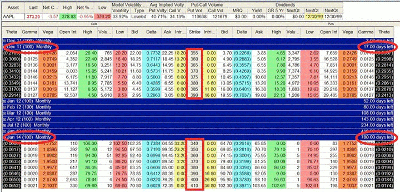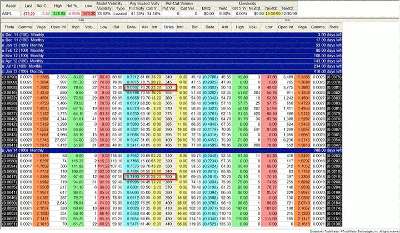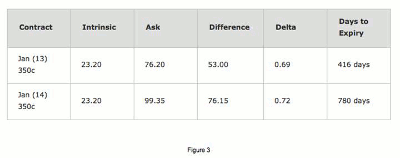An options educator explains the concept behind LEAPS (Long-term equity anticipation securities), investing and trading vehicles that are often puzzling to novice option traders.
An appropriate way to commence our scrutiny is simply by going to the CBOE (Chicago Board of Option Exchange) Web site and using their facts; after all, it was the CBOE who first listed LEAPS back in 1990. According to their Web site, LEAPS are long-term options contracts that can be maintained up to three years. However, it is also possible to define LEAPS as anything that is expiring more than seven months out.
The Web site states that LEAPS are suitable for conservative investors because they have many similarities to actually holding shares of the underlying stock. It is this precise point that we will be examining in greater depth in the next few paragraphs.
Moving on, in terms of the contract specifications, LEAPS have everything that regular stock options have in terms of strike prices and the “Greeks;” just that the expiration is further out than the average monthly option. However, not all the strike prices are listed on LEAPS right away. Figure 1 illustrates that point.
The option chain above shows that on the front month of Apple (AAPL), the strike price increments are five points wide, while on the LEAPS for Jan 2014, strikes are ten points wide. More strike prices will get added as the time to expiration decreases.
Now, let us turn our attention to our core question: Why would anyone want to buy LEAPS when they could simply buy the underlying shares?
First, because buying LEAPS is more economical than an outright underlying purchase. Second, LEAPS are a leveraged product, and third, LEAPS give an ample amount of time for the underlying to actually move, thus making an option profitable.
The CBOE Web site also points out that a LEAPS put could provide a hedge against substantial declines in underlying equities. This means that the investors who own, for example, 100 shares of the underlying stock, could buy a single LEAPS put to protect their investment. Let’s call this strategy Choice A.
There are variations of that strategy, depending on what is owned. Once again, Choice A: if we own stocks, then we could protect the stock shares with the corresponding number of put LEAPS.
Choice B: if we own only call LEAPS, then buying a shorter-term put at the level (strike price) where the stop would be is a correct way of hedging the position.
Lastly, Choice C: buying a call LEAPS and instantly placing another put LEAPS on it would be the most economical thing to do.
See related: Using LEAPS in Place of Stocks
Nevertheless, one thing that the CBOE Web site does not address is what strikes to select; which are logical? So, let us turn our attention to which strike price should be selected.
Article Continues on Page 2
|pagebreak|To be honest, that isn't the right question to ask. The focus should not be on the actual strike price selection, but on selecting the correct Delta, or intrinsic value. The strike prices simply turn out to be a byproduct of the Delta/intrinsic value selection.
An easy answer to this question is the higher the Delta, the better. The higher the intrinsic value, the higher the Delta value is. Even when selecting deep-in-the-money Deltas, which translate to higher intrinsic value, LEAPS ownership costs less than a straight purchase of the shares of the underlying.
For instance, let us compare the outright purchase of Apple, Inc. (AAPL) with buying two different types of LEAPS: Figure 1 shows that AAPL closed at $373.20 on Tuesday, Nov. 29, 2011, and the cost of 100 shares would be exactly $37,320.
Next, let us compare that cost with buying a single contract of January 2013 LEAPS with a strike price of 350. Figure 2 below shows the options chain for the AAPL LEAPS:
The table above, Figure 3, lists the details of the Jan 2013 and Jan 2014 350 call contracts. This table should assist an option trader who is considering which LEAPS to acquire. The Jan 2013 would cost $7,620 and would last for about 400 days, while the Jan 2014 would cost almost $10,000 for nearly double the time—to be exact, $9,935 for 780 days.
Either option is significantly cheaper than the outright purchase of the stock, which would cost over $37,000. The first LEAPS (Jan 2013) is about one-fifth of the cost, while the second (Jan 2014) would still be just over one quarter of the original cost.
In order to determine which of the two LEAPS suits one's trading objectives, the trader must take into consideration personal tolerance for risk. Trading LEAPS is not only about the correct Delta selection, but it is also about selecting the correct time to expiry, depending on the trader's outlook.
As a side note, selecting a low Delta would require a significantly higher move of the underlying security, which represents a higher risk than the selection of the higher Delta.
To recap, the use of LEAPS has numerous advantages over the outright purchase of the underlying. As was shown, LEAPS cost less—significantly less—provide leverage, and if the correct deep in-the-money Delta is selected, would track the underlying nearly perfectly.
By Josip Causic, instructor, Online Trading Academy
























